#ink in the internet
Text
The Dark Street of Psychosis and Schizophrenia
By Arjuwan Lakkdawala
Ink in the Internet
Recently I did extensive research on the Internet about one particular subject, it was because I could see its tsunami like effect rippling through the entire world. The subject is 'Mental Health or Psychology.'
The results of the search were most disheartening. Official statistics from the World Health Organization to every other scientific institute were saying the same thing: "worldwide rise in mental health crisis." What this translates into is that the world is collectively going crazy.
The questions that arise from such statistics, is what is causing this alarming mental decline or disturbance? How should we deal with sufferers or treat them? And what are the risks of us devoloping a mental disorder or our children, and how can we protect our sanity?
Now to have the best understanding about the human psyche, so that we can have acute awareness, and make informed beneficial decisions, should we have to deal with the mental health crisis in anyway.
We have to go back in the history of psychology.
We know this much that Neanderthals and Denisovans were innovative thinkers from the primitive tools they made to the cave paintings.
Discoveries have revealed that we are still learning about the cognitive abilities of pre-historic humans, for example a new book 'The Language Puzzle' by archealogist Dr. Steven Mithen, states that language may have been developed 8 times sooner than was previously thought. That is 1.6 million years ago, rather than 200,000 years ago.
The point of this is that we can be certain man was always cognitive and not an ape.
So now let's fastforward from pre-historic times to the time when philosophy was first recorded in ancient Greece.
Greek philosophy is said to be the very early prototype of mental wanderings that were not based on needs of the day.
In the 17th century the idea of dualism was introduced by French Philosopher Rene Descartes, it is significant as it separates the behavior and actions of a person based on stimulations from the body or environment, from the thinking of the mind that stems from consciousness.
These two aspects are the toughest challenge of psychology to this day. Because of how the effects of environment and society could influence a person's thinking as opposed to internal biological causes. Which is causing the mental disorder, and which has a greater affect on the patient's psyche at any given phase.
In the centuries that followed and even after psychology had emerged as a science apart from physiology and philosophy in the mid-1800s.
There was debate about what constituted a mental disorder, what was the pathogenesis (origin of the mental problem)
What form of treatment would be effective, and how to avoid causing the patient unnecessary suffering by trial and error.
It turns out and not surprisingly that the "pathogenesis - Greek: patho 'suffering' genesis 'origin'" of mental health disorders are one of the most elusive to trace, and hence, the proper treatment very difficult to define.
The first time that a mental condition was recorded to have a biological pathogenesis, was in the curious case of the "general paralysis of the insane." The 1897 discovery was made by the neurologist Richard von Kraftt-Ebing and his assistant Josef Adolf Hirschl.
The Boston Medical and Surgical Journal in 1885 had reported a great surge in the insane. It is said that so much as 1 in 5 patients entering asylums had "general paralysis of the insane."
What the neurologist and his assistant had discovered was that this was the later stages of syphilis. A biological ailment that could manifest in dementia and delusions as untreated syphilis can damage the brain.
While this was a formidable stamp on the connection of a mental disorder and a biological cause. It was generally misleading, as it solidified to a great extent the belief that a mental ailment would be the result of physical defects in the brain. Many scientists of the time would examine brains in autopsies and search for imprints of the mental problem the deceased had, but there were none in most of the cases.
As I explained from ancient times up to the mid-1800s scientists were still having so much difficulty in fully distinguishing consciousness from the physical brain. Needless to say this had delayed the progress in the field of psychology.
Sigmund Freud founded the theory of psychoanalysis. Freud and his colleague Pierre Janet were studying patients with hysteria, seizures, and other physical symptoms with mental disorders.
Psychoanalysis was considered the first major step towards the complex study of the human consciousness and as Freud pioneered the 'unconsciousness.' He theorised that the unconsciousness could manifest into dreams and mental disorders, and was the root cause of conscious psychological problems, the dilemmas in the unconscious mind would have to be brought to the conscious mind in order to treat the patient.
In 1904 Sigmund Freud published 'The Psychopathology of Everyday Life' exploring minuscule details of human behavior, which he thought were symptoms of the workings of the psyche.
While this may have been true, but not every detail could be the result of an unhealthy mental condition.
Sigmund Freud's theory had established the study of psychology as a whole new branch of science. We would think brain autopsies and procedures would be considered irrelevant after such dramatic progress in psychology.
It wasn't.
Unfortunately mental disorder patients were going to face their worst era of great torture and downright mutilation of the brain.
The lobotomy was introduced in the late 1800s and picked up pace in 1935 up to the start of the 1950s. It is a grotesque procedure were nerves in parts of the brain believed to be carrying the thoughts causing the mental disorder are severed.
The intention of the procedure was not to restore sanity, but to put patients in a state of calm. Patients that were violent or had symptoms of schizophrenia were the ones mostly subjected to lobotomy.
It had mixed results with some patients becoming calm, but losing interest in life or having any energy. To other patients dying or relapsing.
An invasive approach is still taken in the case of patients with severe mental disorders, and where other treatments failed. The procedure is called 'Psychosurgery'.
Electric Shock Therapy or Electric Convulsive Therapy (ECT) was first developed in the late 1930s, like the lobotomy it was a severe approach to vulnerable patients who had lost their sanity partially or completely. ECT causes an induced controlled seizure.
I read reports that there were cases where ECT was administered to patients without their consent because they were considered unable to give consent.
Prior to ECT induced seizures for treating mental disorders were caused by oral administration of medication.
Scientists don't know exactly how ECT works, but it is believed to give relief to patients suffering from psychosis, mania, catatonia, schizophrenia, and is still in practice.
A new study published on 27 March in the Nature journal, states that a very strong electrical current in the brain hits the cells and their DNA snaps, and is then repaired, this according to the study is observed when long term memories are made. It could be that when the DNA are repaired, the process encodes information about the electrical current and this forms the memory.
So perhaps the ECT causes relief by damaging DNA in the brain that stores the memory responsible for the mental disorder.
As researchers made discoveries scientists learned about brain chemistry, and then medications were developed to treat mental disorders by pharmaceuticals
There is talk therapy which is what psychologists are qualified for, and then there is psychiatry in which medication could be prescribed. Prevention is better than cure in either case.
We as adults that have had a good, cultured, ethical, and educational upbringing usually are mentally stable, even if we suffer emotional distress or anxiety.
The risks could be to adolescents and teenagers who are still developing and get exposed to negative influence or traumatic experiences at home, school, or social media. OCD (impulsive-compulsive disorder) and PTSD (post traumatic stress disorder) along with intrusive thoughts could be the lethal triggers of psychosis, schizophrenia, bipolar disorder (maniac depression.)
Intrusive thoughts are common and happen almost to everyone. People who don't have mental disorders know to dismiss these thoughts and not focuse on them. Sufferers of OCD and PTSD or patients with dementia, Parkinson's disease, or Alzheimer's may not be able to avoid the Intrusive thoughts that could amplify their trauma, anxiety, fears, phobias, eventually leading to complete detachment from reality and the various severe manifestations of mental disorders. In cases like these talk therapy would probably fail, and medication, ECT, and invasive treatments like psychsurgery could be required.
So the influence the next generation gets could entirely define their mental health and their future. The news and statistics I'm reading are not encouraging as mental crisis is on the rise like never before.
I have a podcast Mind Supply, if you liked this article then you might like the podcasts as I talk about social issues.
Copyright ©️ Arjuwan Lakkdawala 2024
Arjuwan Lakkdawala is an author and independent science researcher.
Twitter-X/Instagram: Spellrainia Email: [email protected]
Sources:
Verywellmind: The Origins of Psychology
From Philosophical Beginnings to the Modern Day
By
Kendra Cherry, MSEd
Updated on November 29, 2022
Fact checked by
Adah Chung
The New Yorker: The Troubled History of Psychiatry
Challenges to the legitimacy of the profession have forced it to examine itself, including the fundamental question of what constitutes a mental disorder.
By Jerome Groopman
Medical News Today: What is electroshock therapy?
Mass General Brigham McLean: ECT Treatment: A History of Helping Patients
Medically reviewed by Heidi Moawad, M.D. — By Lauren Martin on June 30, 2021
Nature.com - Memories are made by breaking DNA — and fixing it
Nerve cells form long-term memories with the help of an inflammatory response, study in mice finds.
By
Max Kozlov
National Institute of Mental Health: Post-Traumatic Stress Disorder
Healthline: Intrusive Thoughts: Why We Have Them and How to Stop Them
Medically reviewed by Bethany Juby, PsyD — By Kimberly Holland — Updated on May 20, 2022
NHS: Overview - Psychosis
Britannica: Sigmund Freud
Austrian psychoanalyst
Actions
Written by
Martin Evan Jay
Fact-checked by the editors of encyclopaedia Britannica
Britannica: lobotomy
surgery
Actions
Also known as: frontal lobotomy, leucotomy, prefrontal leukotomy
Written and fact-checked by the editors of encyclopaedia Britannica
Ancient Origins: Language Developed 8 Times Earlier Than Previously Thought, Says New Book
National Institute of Mental Health: Obsessive-Compulsive Disorder

#Arjuwan Lakkdawala#science#nature#biology#ink in the internet#psychosis#schizophrenia#maniac#bipolar disorder#psychiatry#psychology#history of psychology#ancient greece#Sigmund Freud#dualism#lobotomy#ect
3 notes
·
View notes
Text
The thing that gets me about history and humanity is that you never know what is immortalized, and the things that will be immortalized are things you would never think.
I saw a person sharing a new tattoo, and it was one of Onfim's drawings. A boy who lived so long ago he is barely a blip now, but his drawings meant so much to people that somebody is now permanently marked in their skin with one of those drawings. Do you ever look at the things you make and just sit there and wonder if this is the thing that future people look at? Do you ever look at your art, your writing, your schoolwork, or anything that is yours and just wonder who will find it, who will fall in love with a piece of your humanity and become overwhelmed with emotion over? It's not unlikely. It's not totally unlikely that somebody will find a piece of you in the distant future and devoid of any other context of who you were will still love you because you were here. You were here, and you are still here, even hundreds or thousands of years later. Treat yourself with the same love that so many have for dear Onfim.
#positivity#gentle reminders#if anybody has ancient children's drawings beside onfim let me know they melt my heart#i have always wanted a tattoo of that kind of thing too and i want ideas#see if archeologists dig me up or whomever else they won't find significant tattoos or other things. they will see i have loss.jpeg on me#and i think that's just as important. these people must know that people are silly and weird and don't make sense and that's IMPORTANT#i'm just. so obsessed with this because it's instantly humanizing#what little child hasn't drawn humans with twelve fingers per hand#or those kids drawings where it's only a torso/head conglomerate with stick legs and hands#i just really lived seeing how their tattoo turned out because i wasn't sure if it would look good in ink and skin#i feel the same way about archiving the internet. i was looking for the written crochet pattern for something#and the person who wrote and created it passed away and their blog has been scrubbed#their blog only exists on the archives. their pattern is only accessible on youtube because somebody made a video tutorial with the pattern#it's an eerie feeling. they've been gone for two years but their blog has been tethered by the wayback machine
401 notes
·
View notes
Text

005
Go listen to my new project 003 on all platforms
#weirdcore#weirdcore aesthetic#dreamcore#surrealcore#liminalcore#emptycore#strangecore#oddcore#nostalgiacore#vhs aesthetic#vhs tapes#vhs#spilled poetry#spilled writing#spilled words#spilled thoughts#spilled ink#poets on tumblr#surreal#lost#surrealism#dream#liminal#liminal spaces#old internet#old web#oldweb#Spotify
235 notes
·
View notes
Text
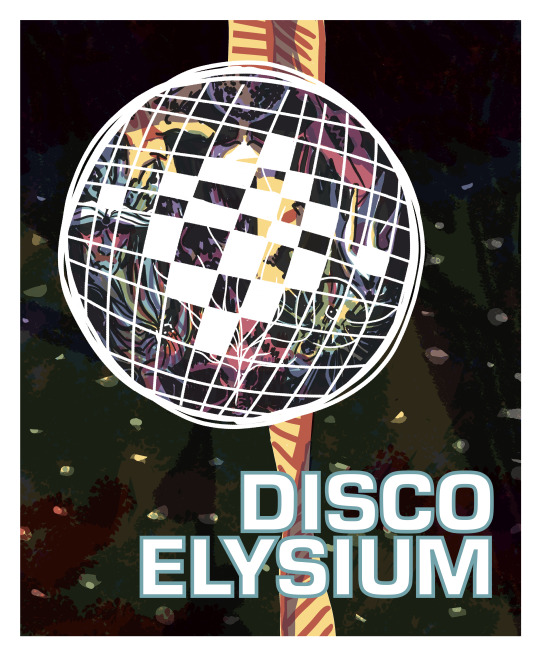
psssst look under the cut
surprise I actually screen printed this poster

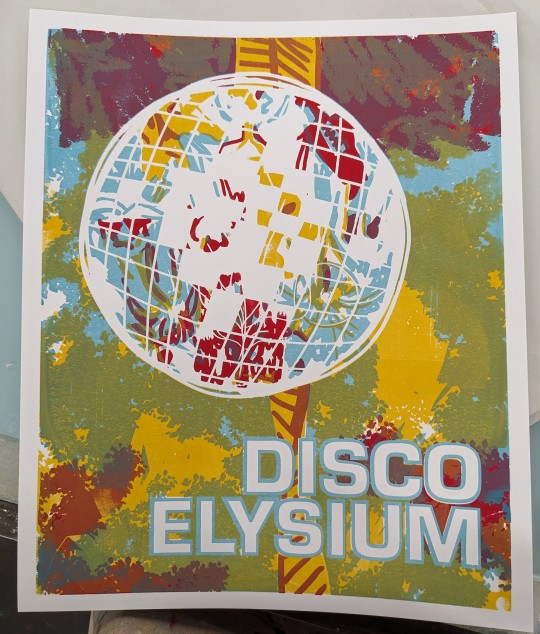
sorry I only have the one process pic but it was finals when I made this so I was in a rush
14x17, 5 color screen print- one for each type of skill + black. getting the layering and registration just right was a bitch and a half but I love how it came out <333
#disco elysium#disco elysium fanart#de fanart#disco elysium skills#screen printing#I did 10 prints of this and in the end only like 4 of them came out just right cause I had to mess with the opacity of the inks like crazy#I just wish photographs did the print justice cause there's something about the physicality of the piece that's so scrumptious#the digital version was made first but always with the intention to screen print from the way I constructed it#I love the way screen printing intersects between physical and digital processes. it might be my favorite medium tbh#enough rambling. show me love for posting my school work pls#cause I usually forget that I am an artist who makes things and I can post those thing to the internet for fake points#soupy post
199 notes
·
View notes
Text

Ai art fuck off
#artists on tumblr#sketch#ink sketch#imagine if they actually made tools for artists instead of this weird unethically used gimmick#cooler painting programs or like idk something that didn't just scrape the entire internet for profit#art#ink#drawing#people really think artists gonna sue individual ai artists like there's any profit in that#like artists could actually afford that money and time wise#it's self-centered fools who think that's what this fight is about#we just don't want our shit taken without permission and used as fodder for corporations to print money#without throwing a single bone at artists#artists are devalued and it shows and just keeps showingggghhhhhhggghg#☠️
1K notes
·
View notes
Text
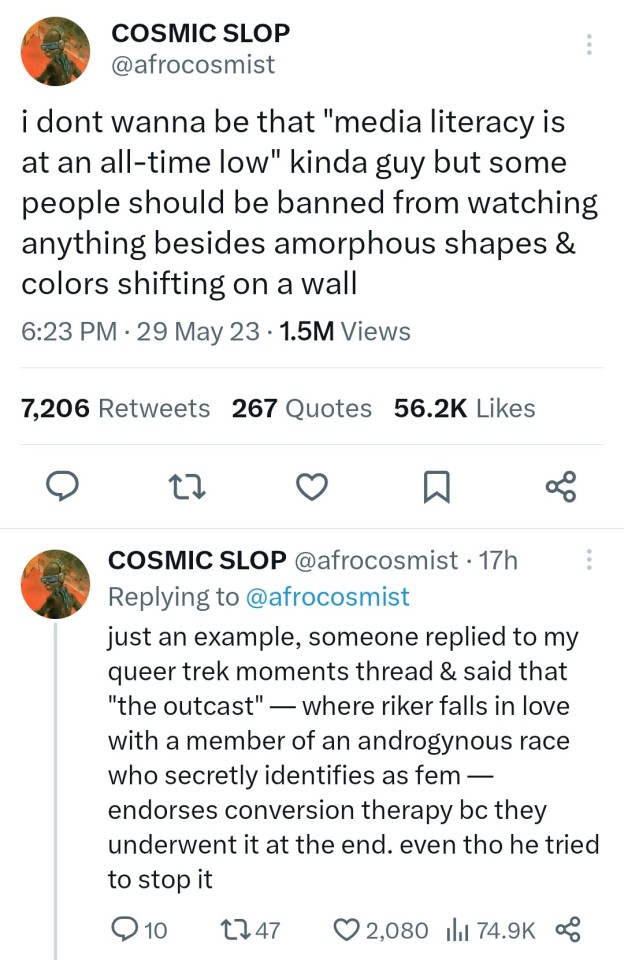
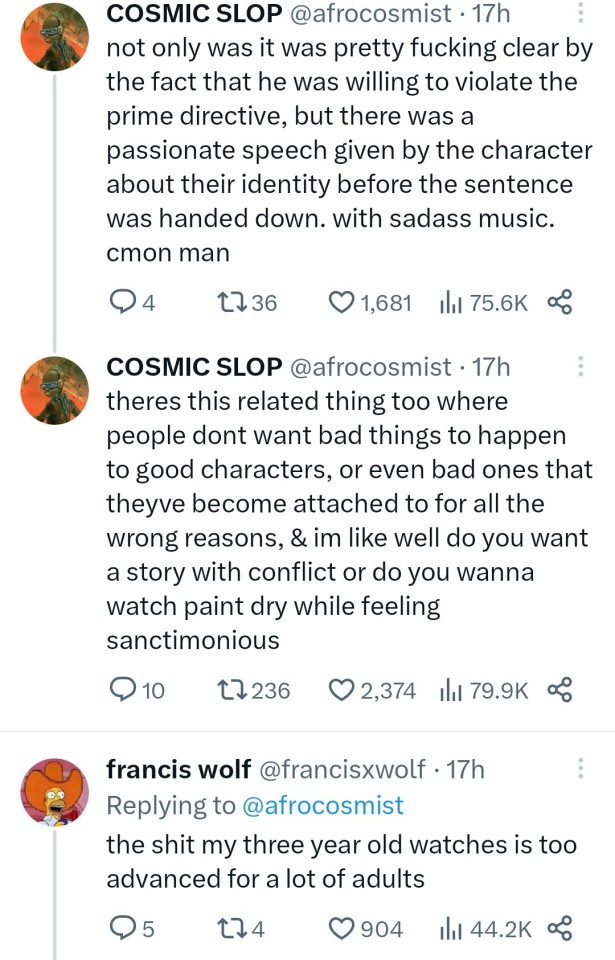

434 notes
·
View notes
Text


Soulmate Ink au pt.4 is now on patreon! I'm having fun with this one but I also wonder a lot how does it feel, like I'm trying a bit less of comedy, the format is more square and page like...
Anyway! Consider checking it out if you feel like it
#ace attorney#miles edgeworth#phoenix wright#narumitsu#wrightworth#ink soulmate au#soulmate ink au#aa soulmate au#aa soulmate ink au#sketch#azherwind#I kidna wish ppl would comment their opinions more in depth but oh well haha thats how the internet goes in gral
175 notes
·
View notes
Text


[✯]
#skin & ink magazine#tattoos#goth#goth subculture#90s#90s goth#90s nostalgia#magazines#internet finds#web finds#source is linked
126 notes
·
View notes
Text

Magdeburg Unicorn, the 231st Known One.
#unicorn#pseudopaleo#known on internet for being the worst fossil reconstitution of history#its hilarious#its supposed to be a wooly rhino#the spine is upside down i just cant-#chimera#monster#bestiary#creature design#ink#924#octem 116#aqva 4#the Known Ones#Magdeburg Unicorn#Magdeburg#paleoblr#paleoart
176 notes
·
View notes
Text
Science and Society in the New World
By Arjuwan Lakkdawala
Ink in the Internet
I'm tirelessly fascinated by science and the world we live in. I have been observing the changes happening. As I have noted in my previous article a New World has sprung around us, with swiftly progressing science and a changing society due to the influence of social media for better or worse (depends on your perspective.)
We have the positive aspect of this new evolving world and the negative one. I will focus first on the negatives in this article since they are concerning.
For example obesity has increased with 1 in 8 people in the world living with obesity in 2022 according to the World Health Organization 2024 study, with confirming reports about world wide increase in the International Journal of Obesity - 2024.
And cancer is striking young adults, mostly women and people in their 30s that has "doctors alarmed and baffled." - Wall Street Journal.
Studies found the increase to be of 14 types of cancer. "Many of which affect the digestive system." - CNN Health.
There could be a link between these two rising phenomena and a particular change in society that came about forcefully in 2020 ‐ that is the Covid19 lockdown, because of which not only did many people not get enough exercise, but had moved to eating conveniently from takeaways. A habit that maybe didn't go away after the lockdown.
In our present day, food delivery apps offer any food we could think of in less than an hour, delivered straight to our doorstep. This includes many sugary foods and drinks. If I was to make a magical comparison, think of our mobile phones like magic wands...wave it and the food you want magically appears within an hour, you don't have to cook or make a trip just wish for your meal.
How many young adults do you think would thoughtfully order their food based on health criteria rather than whatever looks the most delicious on the app advertisement. In addition to the ease with which any food is available, the fact that there is so much variety means you never get bored and so are likely to eat a large amount in every meal.
Food you haven't cooked means you don't know the ingredients, especially most takeaway foods unlike packaged foods don't have label of ingredients.
The question of ingredients is most concerning in any food.
The average person is rarely familiar with the side effects or potentially harmful ingredients, some people don't have any awareness at all about preservatives, food colouring, artificial flavours, or additives. At best they check the expiration date of canned goods.
For example the food colouring Titanium dioxide (E171 on labels) was banned in France in 2020 followed by the European Union in 2022. It is a mineral that naturally occurs and has many crystallised forms. It is used as a white pigment in foods and other non-edible products. Studies have linked it to genotoxicity and cytotoxicity.
Genotoxicity is where it can cause DNA damage which can cause cancer, and cytotoxicity means a substance that is harmful to cells. The intensive analysis of Titanium dioxide particularly came into focus when science progressed enough to study nanoparticles. Titanium dioxide produces nanoparticles that can enter the bloodstream.
To get a clear picture nanoparticles are 1 to 100 nanometers, a human hair is 80,000 nanometers in width.
Titanium dioxide though banned in Europe and Saudi Arabia, is still used in food products in America and Canada (2023 June report).
I did not find 2024 report regarding this issue.
The reason why different countries have different health regulations is that researchers have varying criteria of what makes a product toxic for human consumption, when it comes to substances that won't immediately kill you like straight out poisons.
How many consumers would have awareness about possible ingredients like these in their takeaway meal or dessert. The answer is probably a very small percentage, especially among adolescents and young adults.
Titanium dioxide could be in your white chocolate mocha coffee or velvet cake white chocolate icing, if it is not banned in your country.
When it comes to food the subject is very large, which is impossible to be summarised in one article. But I came upon some interesting facts and history about chocolate. I found it interesting as I get to explore the Mesoamerican civilization of the Aztecs (present day Mexico) and study if we can learn somethings from it.
Cocoa beans were said to be first used as food by the Olmecs, a tribe in the region of Mesoamerica, then by other pre-Columbian civilizations basically in the same region. The tribes include the Aztecs, Mayans, Inca (Peru) etc.
The Olmecs didn’t have written records but pots found in archealogical sites have traces of cocoa substance.
The Aztecs called cocoa Xocolatl and it was considered more valuable than gold, and even used as currency, throughout these civilizations chocolate was consumed as a bitter drink, and maybe spiced with chilli, which was a common crop in the region.
No one knows the exact origin of these tribes but possible they were nomadic hunter-gatherers who started to build settlements.
It ended very badly for the Aztecs when the Spanish conquistador Hernàn Cortès arrived in Mesoamerica and had trained about 400 soldiers and marched into Tenochtitlan, the capital city of the Aztec empire.
The leader Montezuma unaware of the intentions of the Spaniard greeted him and his men as honored guests (talk about a Trojan Horse) but was captured and many Aztecs slaughtered by the invaders. European diseases like small pox had also reached the Aztecs and due to no immunity they died in heaps. The report I read does not state whether small pox was intentionally used as a biological weapon. But over a course of some years the Aztecs had been conquered by the Spaniards. Though the Aztecs outnumbered the invaders, their weapons and perhaps their knowledge was much infurior, giving the invaders an edge over them.
Soon after the Inca (modern day Peru) were also conquered, and it was roads that they had made that helped facilitate the attack on them.
All of these pre-Columbian civilizations had human sacrifice rituals and chocolate drinks could have been part of the ceremony.
Dark chocolate has proven to prevent the start and progress of cancer. Flavanoids in cocoa beans have cancer fighting properties. It is not a substitute for professional medical treatment, but can be part of a healthy diet. Dark chocolate is defined as 60 to 70 percent cocoa.
Copyright ©️ Arjuwan Lakkdawala 2024
Arjuwan Lakkdawala is an author and independent science researcher.
X/Instagram: Spellrainia
Email: [email protected]
Sources:
Oncology Nursing News, chocolate: to eat or not to eat? Karen Harris
History, Aztecs, history . com editors
History of chocolate, history . com editors
National post, approved for use in Canada, advocates are urging us to ban this common food additive, Sam riches
National Geogrphic, who were the msya? Decoding the ancient civilization's secrets, Erin blakemore
Britannica, titanium dioxide, chemical compound, debasmita patra, fact-checked by the editors of Encyclopaedia Britannica
Cnn health, Cancer diagnosis rates are gong up in younger adults, study finds, driven largely by rises in women and people in their 30s, Brenda goodman
Wall Street Journal, Cancer is striking more young people, and doctors are alarmed and baffled, brianna abbott
International Journal of Obesity, obesogens: a unifying theory for the global rise in obesity, jerryold j. Heindel, Robert h. lustig, Barbara e. Corkey
Regask, titanium dioxide banned as a food additive in Ksa, Yemen, and Qatar
U.s. right to know, titanium dioxide, banned in Europe, is one of the most common food additive in u.s., mikaela conley

#Aztecs#Mesoamerica#pre-Columbian civilizations#Arjuwan Lakkdawala#ink in the Internet#history#national geographic#Mexico#peru#inca civilization#chocolate#dark chocolate#new world#Tenochtitlan
0 notes
Text
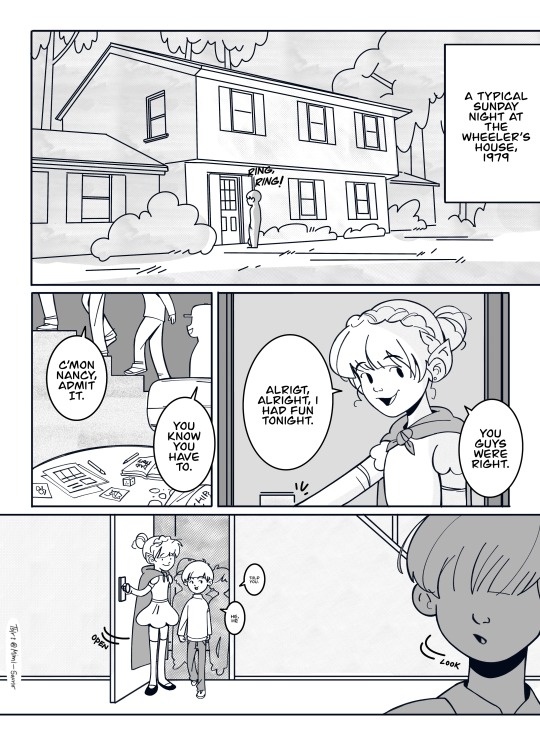
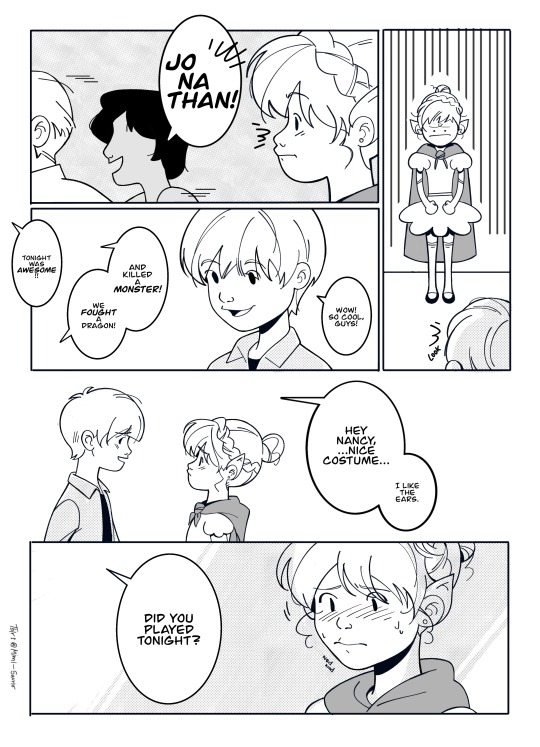
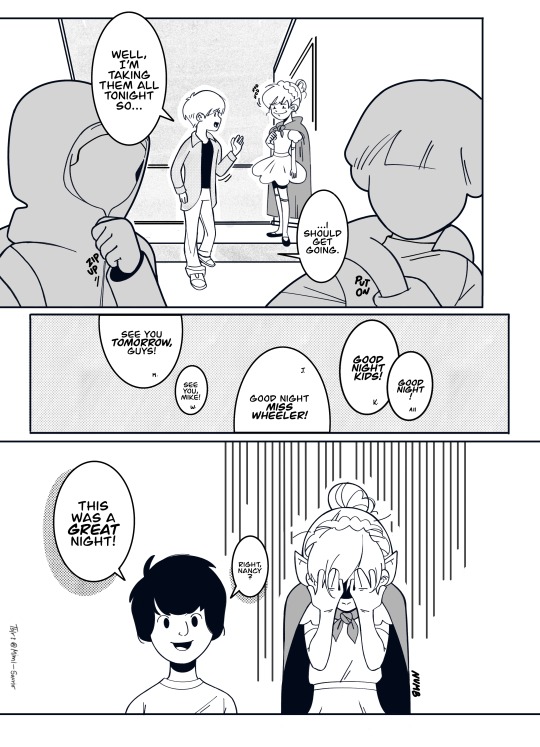





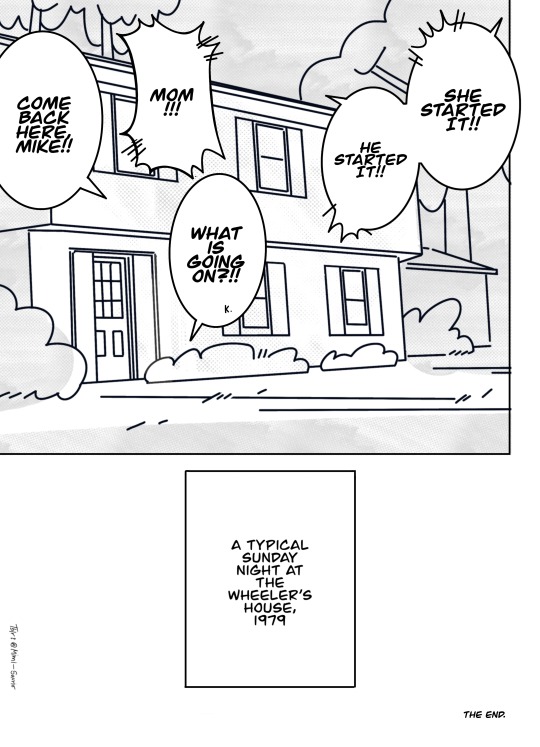

ST Childhood AU: A take on that night where Nancy played D&D with the party.
It's been a long time since I drew to make a comic, but so far I love to ink somehow I got relaxed while doing it! I have a few other ideas for comics, not only for ST, but I think I can handle another one if I can get to write them down on a script one of these days.
Anyway, I hope you enjoy this one! <3 And remember, I recently opened a Ko-Fi so if you enjoy my fan-arts and stuff you can support me or ask for a commission!
Lastly, sorry if the grammar has mistakes, I'm really rusty with my English D,:
#stranger things#jonathan byers#nancy wheeler#mike wheeler#will byers#jancy#comic fanart#illustration#my art#artists on tumblr#ST Childhood AU#st headcanons#gonna take a nap for three days bye!#just kidding I love internet#btw I'm in love with the ink brushes I used for this#I don't even know where I got them#I was gonna post like hours ago but the extra page came out of nowhere#It was a nine but I wanted to have ten pages
53 notes
·
View notes
Text
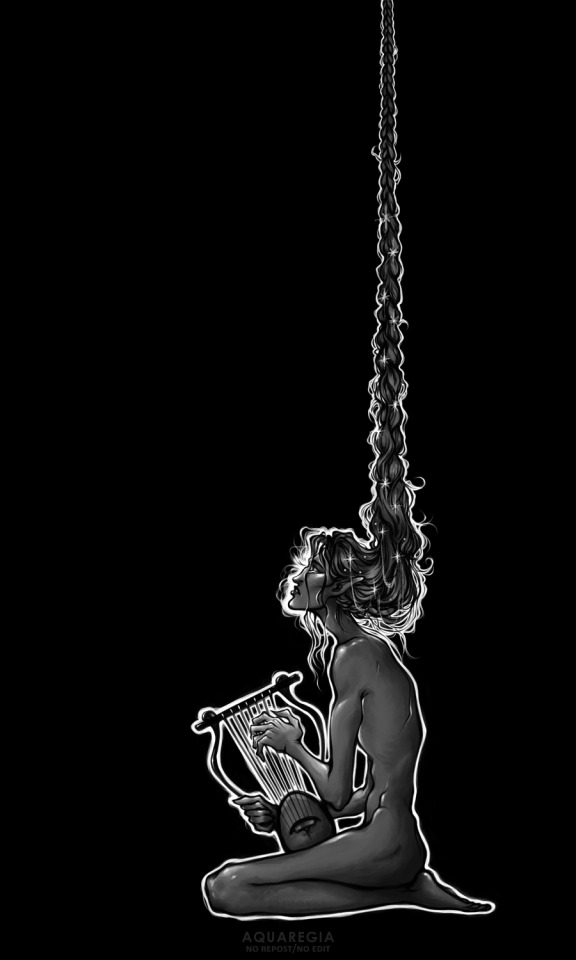
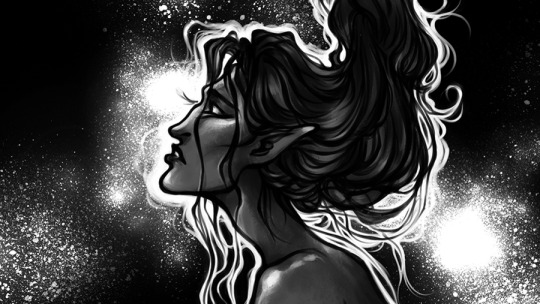
Maglor (+ closeup of alternate version,) a gift for dear @samarqqand.
#maglor#silmarillion#my silm#silmarillion art#this is actually melkmag. my very first. so of course its a gift for sam#working title of this piece in my mind was “the coal mine canary” some Deep Lore for you all there#does this need a warning for nudity?? do we have to censor museums? i dont think so#maglor biased artist thatdoes not draw he with a harp or a lute: excomunicated (saving that for the kronberg piece... i have not forgotten)#It feels wrong to post him and release him into the cruel claws of the internets. I am very posseessive of this one. Please love him well.#these tags are long and unpractial enough ad full of dreadful typos... not going to expand on Melkor asking to be depicted as pure darkness#amorphous. all space taking. expansive. the ink that overflows the page. c'est lui.#there arent tags enough. and if you know you know.#............if there has ever been a more fitting ship to be posting art insistently through october#solo maglor#melkmag#melkglor
146 notes
·
View notes
Text
I know I was meant for something more.
More than beaten bloodied blacked out on the floor.
I need to live.
I need to feel.
I need to cry.
I need to mend before I die.
#weirdcore#weirdcore edit#weirdcore aesthetic#lost#dreamcore#surreal#surrealcore#surrealism#dream#liminal#liminal spaces#strangecore#emptycore#oddcore#vhs aesthetic#vhs tapes#vhs#spilled writing#spilled poetry#spilled words#spilled thoughts#spilled ink#poets on tumblr#old internet#oldweb#old web
37 notes
·
View notes
Text
The weirdest shit about running a tattoo parlor is the people calling and asking for supplies. It's like trying to buy a jug of milk at Dennys.
61 notes
·
View notes
Text

Day 26 of Inktober 2023: Remove
#death note#teru mikami#kiyomi takada#random reporter I found on the internet#should have done the breaking news text better#XD#inktober#day 26#remove#delete synonym#lol#delilahhyuuga238#traditional art#ink#black and white#artists on tumblr
54 notes
·
View notes
Text
They call me pretty baby 💗
#pretty girl#girls with piercings#girls with ink#girls with tattoos#giggling and twirling my hair#blushing and twirling my hair#b!mbo#femme#queer community#bd/sm community#k!nk community#babygirl coded#goth girl#alt gf#alt model#0nlyfanz#onlyf4nz#onlyf@nz#of girl#cam gurl#cam grl#asks open#ask me anything#anons open#send anons#anons welcome#of model#girls who smoke weed#pretty gf#internet gf
125 notes
·
View notes